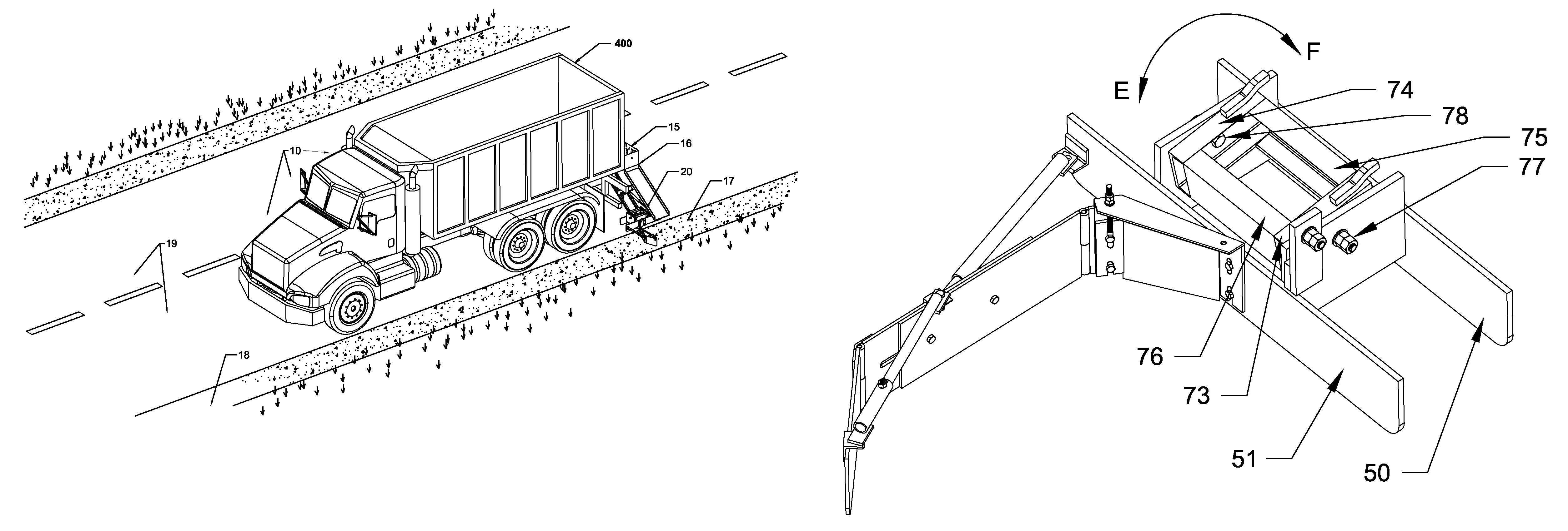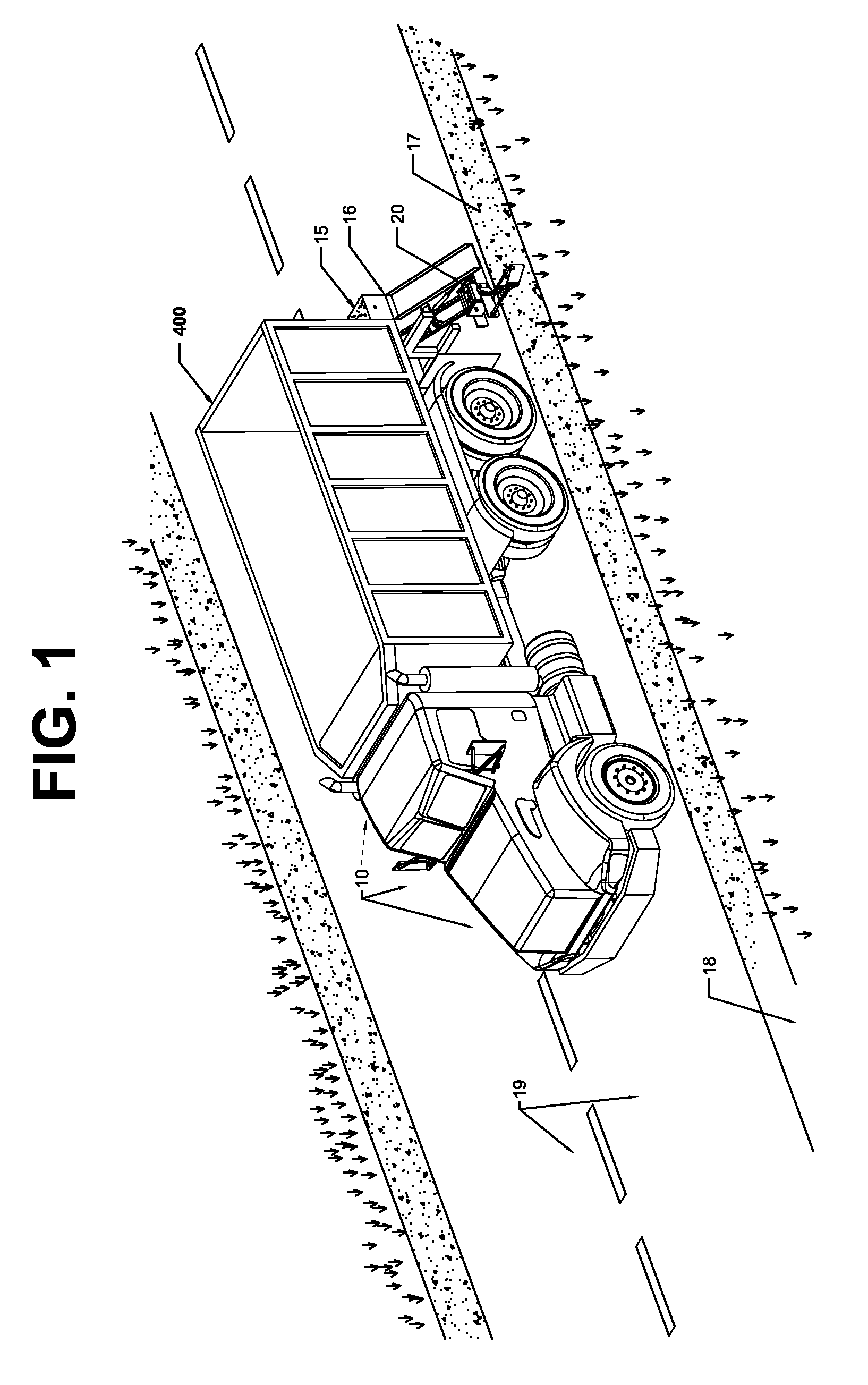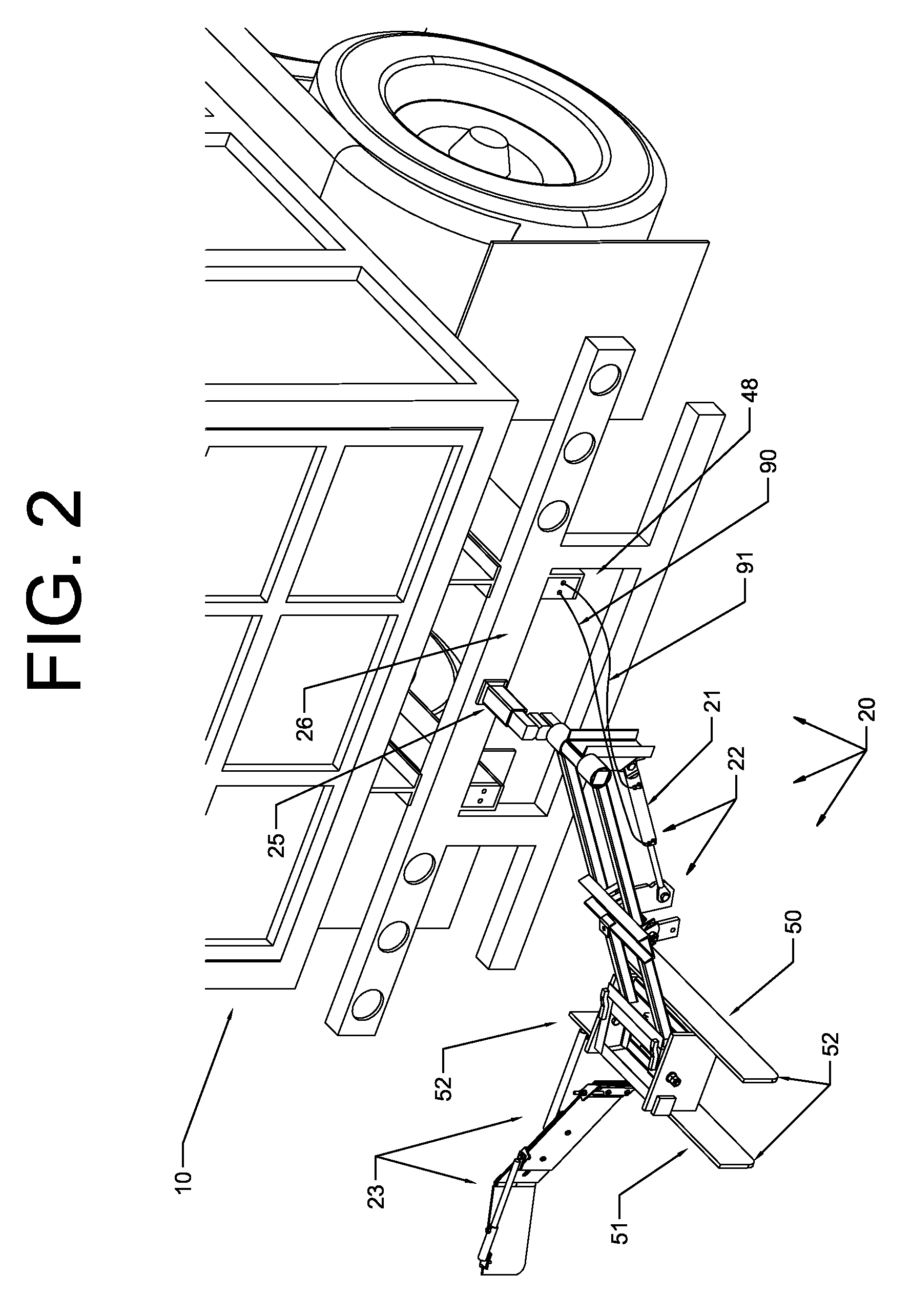Adjustable method and apparatus for laying, leveling and compacting road shoulders
- Summary
- Abstract
- Description
- Claims
- Application Information
AI Technical Summary
Benefits of technology
Problems solved by technology
Method used
Image
Examples
Embodiment Construction
[0041]Reference will now be made in detail to the description of the invention as illustrated in the drawings. Although the invention is described in connection with the drawings, there is no intent to limit the invention to the embodiment or embodiments disclosed therein. On the contrary, the intent is to include all alternatives, modifications, and equivalents included within the scope and spirit of the invention as defined by the appended claims. However, the invention and its alternatives, modifications, derivatives and / or equivalents in other applications are meant to be included within the scope and spirit of the invention as defined by the appended claims. For example, but without limitation, the invention has been described using channel, however, flat steel stock and / or angle iron can readily be substituted for channel. Similarly, the hitch bar could be solid or tubular and alternatives to the use of pivot pins, such as rotational sockets, and other means well known in the ...
PUM
 Login to View More
Login to View More Abstract
Description
Claims
Application Information
 Login to View More
Login to View More - R&D
- Intellectual Property
- Life Sciences
- Materials
- Tech Scout
- Unparalleled Data Quality
- Higher Quality Content
- 60% Fewer Hallucinations
Browse by: Latest US Patents, China's latest patents, Technical Efficacy Thesaurus, Application Domain, Technology Topic, Popular Technical Reports.
© 2025 PatSnap. All rights reserved.Legal|Privacy policy|Modern Slavery Act Transparency Statement|Sitemap|About US| Contact US: help@patsnap.com



